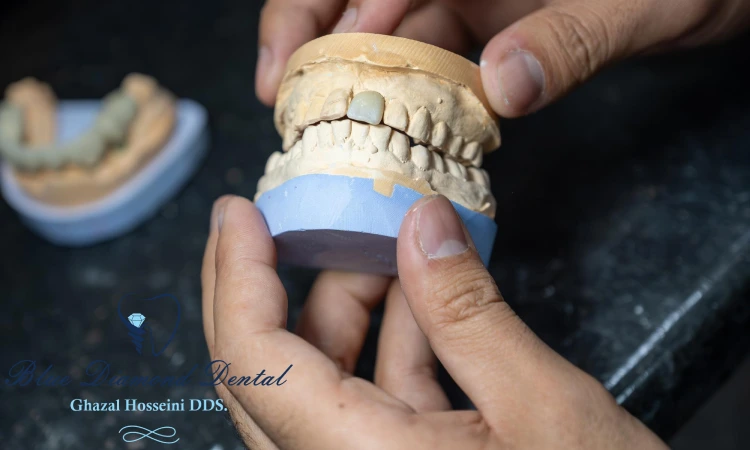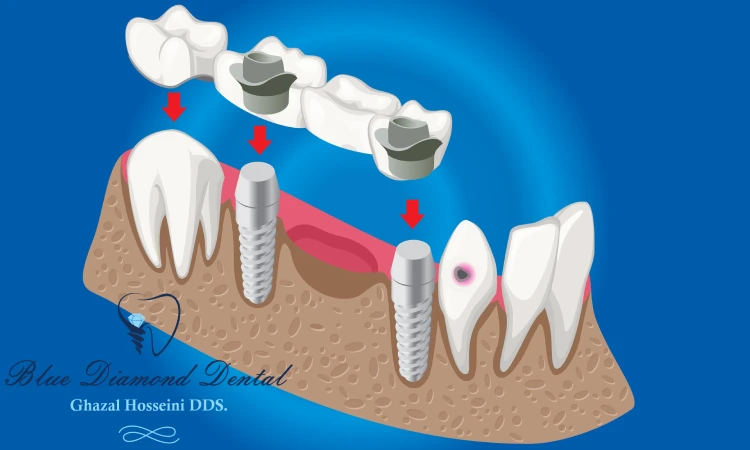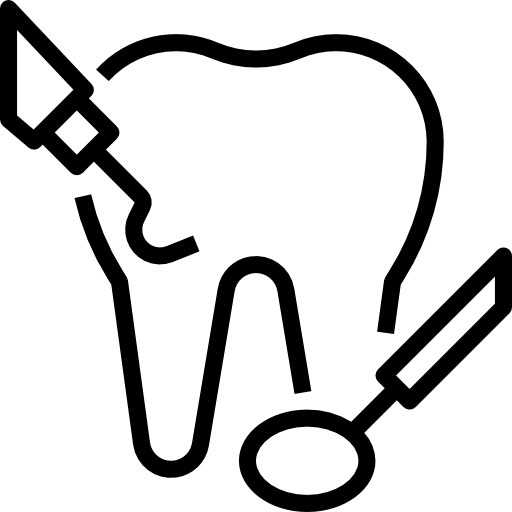
Bar retained overdentures
Overview about Bar retained overdentures
Bar retained overdentures are a type of removable dental prosthesis that are supported by a metal bar attached to implants in the jawbone. They are designed to replace missing teeth and restore the function and appearance of the mouth. Unlike conventional dentures, bar retained overdentures are more stable and secure, as they clip onto the bar and do not rely on adhesive pastes. Bar retained overdentures have several advantages over other types of dentures, such as:
- They prevent bone loss and preserve the facial structure by stimulating the jawbone with the implants.
- They improve chewing efficiency and allow the patient to eat a wider variety of foods.
- They enhance speech clarity and reduce the risk of denture slippage or clicking noises.
- They are comfortable and easy to clean and maintain.
Bar retained overdentures are an important option in dental prosthetics, as they can improve the quality of life and oral health of patients who have lost most or all of their teeth. They are a cost-effective and durable solution that can last for many years with proper care.

What is a Bar Retained Overdenture?
Implants: These are artificial roots that are surgically placed into the jawbone to anchor the overdenture. Depending on the available bone and the design of the overdenture, four to six implants may be needed.
Bar: This is a metal framework that connects the implants and provides rigid support for the overdenture. The bar is custom-made to fit the shape and size of the jaw and the implants. The bar can be either straight or curved, depending on the implant position and the overdenture design.
Attachments: These are devices that attach the overdenture to the bar. They can be either clips, magnets, or ball-and-socket joints. The attachments allow the overdenture to snap onto the bar and hold it in place. The attachments also provide some degree of movement and resilience for the overdenture, which can improve the comfort and function of the prosthesis.
Overdenture: This is the removable part of the prosthesis that contains the artificial teeth and the gum-colored base. The overdenture is made of acrylic resin or a combination of acrylic and metal. The overdenture has openings or recesses underneath that correspond to the attachments on the bar. The overdenture can be easily removed and cleaned by the patient.
The Process of Getting a Bar Retained Overdenture
The process of getting a bar retained overdenture involves several steps, from the initial consultation to the aftercare. Here is an overview of what to expect:

Initial consultation:
The first step is to visit your dentist and discuss your needs and expectations. Your dentist will examine your mouth and take x-rays and impressions of your jaw and teeth. Your dentist will also determine the number and location of the implants that will support the bar and the overdenture. You will be informed of the benefits and risks of the procedure, as well as the costs and time involved.
Fitting process:
The fitting process may take several appointments, depending on the complexity of your case. The first appointment is to place the implants into your jawbone. This is done under local anesthesia or sedation, and may require some stitches and healing time. The second appointment is to attach the bar to the implants. This is done after the implants have integrated with the bone, which may take a few months. The bar is custom-made to fit your jaw and implants, and is secured with screws. The third appointment is to fit the overdenture to the bar. The overdenture is also custom-made to match your teeth and gums, and has clips or attachments that snap onto the bar. Your dentist will adjust the fit and bite of the overdenture, and teach you how to insert and remove it.
Aftercare:
The aftercare involves taking good care of your implants, bar, and overdenture. You will need to visit your dentist regularly for check-ups and cleaning. You will also need to brush and floss your overdenture daily, and remove it at night. You will need to clean the bar and the attachments with a soft brush or a special device. You will need to avoid hard or sticky foods that may damage the overdenture or the bar. You will need to report any problems or discomfort to your dentist as soon as possible.
Benefits of Bar Retained Overdentures
Bar retained overdentures are a type of removable denture that are supported by a metal bar that is attached to implants in the jawbone. They offer several benefits over conventional dentures, such as:

- Improved stability:
Bar retained overdentures are more stable and secure than conventional dentures, as they clip onto the bar and do not rely on adhesive pastes or creams. They do not move or fall out during eating, speaking, or laughing, which can improve the confidence and comfort of the patient. - Increased comfort:
Bar retained overdentures are more comfortable than conventional dentures, as they distribute the chewing forces evenly and reduce the pressure on the gums and the jawbone. They also prevent bone loss and preserve the facial structure by stimulating the jawbone with the implants. They do not cover the palate, which can improve the food tasting experience and reduce the gagging reflex. - Enhanced oral function:
Bar retained overdentures improve the oral function of the patient, as they allow them to eat a wider variety of foods and chew more efficiently. They also enhance the speech clarity and reduce the risk of denture slippage or clicking noises. They are easy to clean and maintain, as they can be removed and cleaned regularly.
Bar retained overdentures are an important option in dental prosthetics, as they can improve the quality of life and oral health of patients who have lost most or all of their teeth.
Potential Challenges and How to Overcome Them
Bar retained overdentures are a type of removable denture that are supported by a metal bar that is attached to implants in the jawbone. They offer many advantages over conventional dentures, such as improved stability, increased comfort, and enhanced oral function. However, they also pose some potential challenges that patients might face when getting or wearing them. Some of these challenges are:
- Surgical complications:
The placement of implants and the bar requires surgical procedures that may involve risks such as infection, bleeding, nerve damage, or implant failure. To overcome these challenges, patients should follow the instructions of their dentist and oral surgeon before and after the surgery, such as taking antibiotics, avoiding smoking, and maintaining good oral hygiene. They should also report any signs of complications to their dentist as soon as possible and seek prompt treatment. - Prosthetic complications:
The overdenture and the bar may require adjustments or repairs over time, due to wear and tear, changes in the jawbone, or damage to the components. To overcome these challenges, patients should visit their dentist regularly for check-ups and cleaning, and avoid biting or chewing hard or sticky foods that may damage the overdenture or the bar. They should also inform their dentist of any problems or discomfort with the prosthesis and seek timely intervention. - Oral hygiene difficulties:
The overdenture and the bar may create some difficulties for maintaining oral hygiene, such as plaque accumulation, food impaction, or irritation of the gums and the mucosa. To overcome these challenges, patients should remove and clean the overdenture daily, using a soft brush or a special device. They should also clean the bar and the attachments with a soft brush or a special device, and floss around the implants and the natural teeth. They should also rinse their mouth with water or an antiseptic mouthwash after meals and snacks. - Psychological and social issues:
The overdenture and the bar may affect the psychological and social well-being of the patients, such as their self-esteem, confidence, or satisfaction with their appearance and function. To overcome these challenges, patients should seek support and guidance from their dentist, family, friends, or professional counselors. They should also focus on the positive aspects of their prosthesis, such as the improved quality of life and oral health.
Bar retained overdentures are an important option in dental prosthetics, as they can restore the function and appearance of the mouth for patients who have lost most or all of their teeth.
Conclusion
Bar retained overdentures are a type of removable denture that are supported by a metal bar that is attached to implants in the jawbone. They are designed to replace missing teeth and restore the function and appearance of the mouth. The article explains the components, the process, the benefits, and the potential challenges of getting a bar retained overdenture.
The article also provides solutions on how to overcome the challenges and maintain good oral hygiene and care. The article emphasizes the importance of bar retained overdentures in dental prosthetics, as they can improve the quality of life and oral health of patients who have lost most or all of their teeth.
They are a cost-effective and durable solution that can last for many years with proper care. Bar retained overdentures are a suitable option for patients who have enough jawbone to support the implants and the bar, and who prefer a removable prosthesis over a fixed one.






